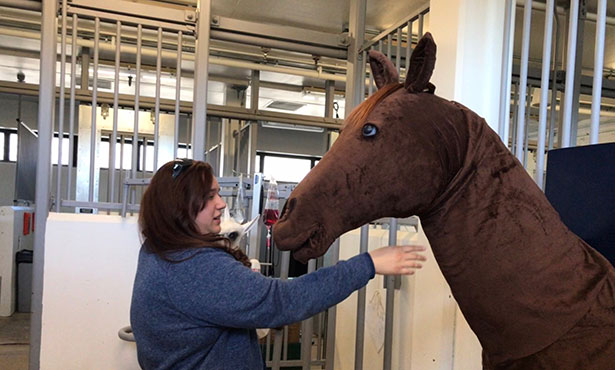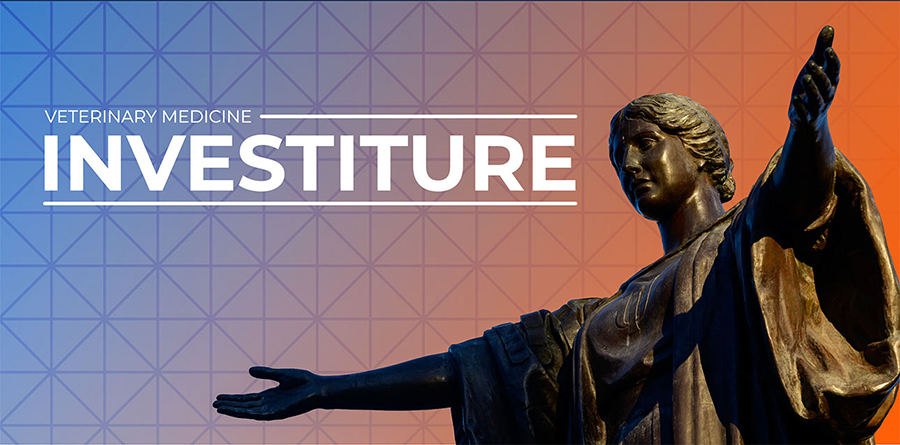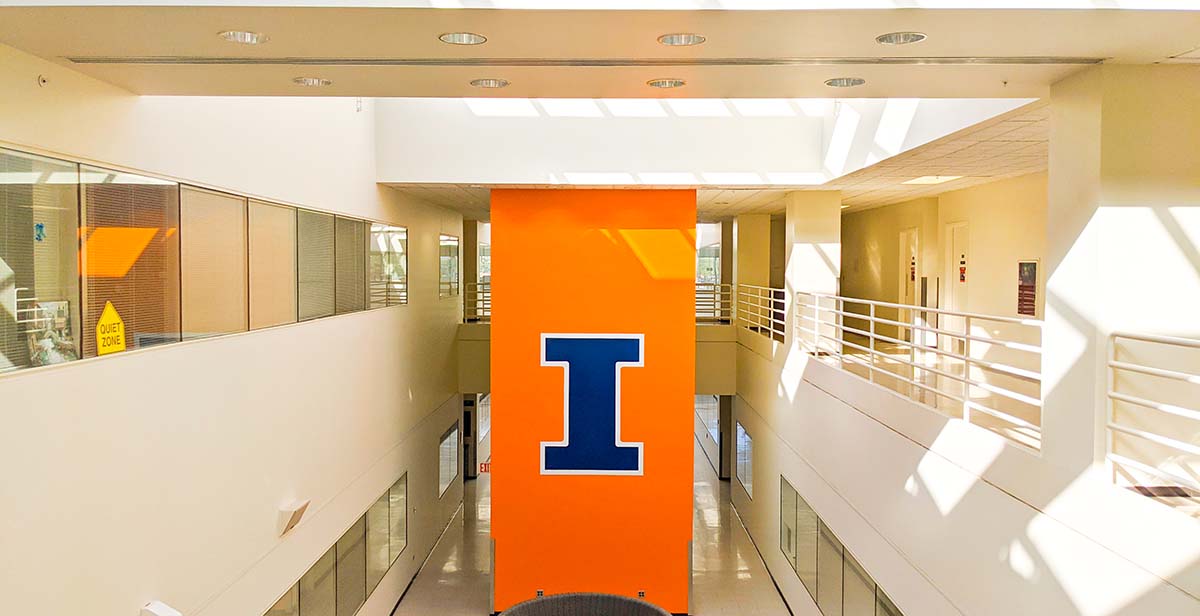Equine Meets Design
“The nice thing about veterinary medicine is sometimes you get to create things that don’t yet exist,” says third-year Illinois veterinary student and part-time Clinical Skills Learning Center (CSLC) employee, Katyana Palafox. This summer, Palafox designed and built three life-size horse heads that will help students learn advanced equine skills. Palafox has worked with CSLC manager Sherrie Lanzo since 2018 ensuring that the CSLC at Illinois remains an industry leader in veterinary education.
Acquiring Horse Heads
Originally, the CSLC planned to acquire taxidermic horse head molds and employ Palafox’s help to create a decorative covering over the model. Students would use the models to practice venipuncture and intramuscular injection skills on a life-size equine. When the CSLC discovered these models could cost hundreds of dollars each and would be limited to only one form, Lanzo had a new idea. “What if we make our own 3D model of a horse and make the form around it. Would you be able to do that?” Lanzo asked Palafox.
Years of theatrical set-building and a focus on equine medicine post-graduation made this the perfect opportunity for Palafox to mesh equine with design. Palafox and Lanzo bought the wood and foam that day, and the third-year veterinary student got to work. Palafox had designed, built, and completed three life-size model horse heads in just three weeks.
The Process
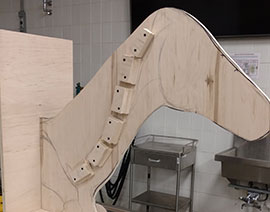
A simple wooden silhouette proportional to a living horse comprised the base. The wood was covered with foam and vet-wrap bandaging tape to create an outside structure. Palafox added the neck, the head, the shoulder, and the ears piece by piece. With the base complete, achieving anatomical accuracy was the next step. “I had to really consult the anatomy books to be sure that every muscle and groove were accurate,” recalled Palafox.
Besides referencing academic literature to accurately assemble each horse, Palafox relied on Lanzo’s anatomical expertise. Each time Palafox added large parts to the horse, Lanzo would palpate the vertebrae to determine how realistic the model felt.
Palafox simulated the horses’ vertebrae by cutting sheets of ¾” wood into rectangle-shaped blocks. “The most important thing when palpating a horse’s neck is to feel the hard area to distinguish pure muscle from bone,” says Palafox. This simulation of finding the “hard spots” allows students to palpate the path of vertebra down the neck, ensuring to inject into the muscle above the vertebrae and near the shoulder.
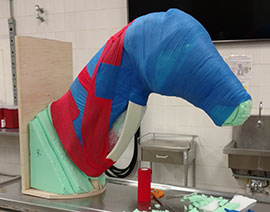
Getting in the Groove
The jugular groove helps students locate the jugular vein for venipuncture. Palafox created a realistic jugular groove complete with an IV catheter line, fake blood bag, and a foot-long silicone tube. Fake blood was inserted into the tube and then the needle from the IV line was placed into the top of the silicone tube. Gravity assists with blood flow and students can now practice drawing “blood” out from the horse’s vein.
The final step was simulating cosmetic equine qualities for student training. “I started manipulating to see what else I could do to make it more realistic,” Palafox commented. She crafted lifelike horse eyes by using ping pong balls as a mold to create silicon spheres. The models replicate horses so closely that the upper lips are even susceptible to twitch restraint — used in various stressful situations to control a horse. This is a valuable skill that all equine-interested students will now be able to practice.
Shadow, Chance, and Sassy
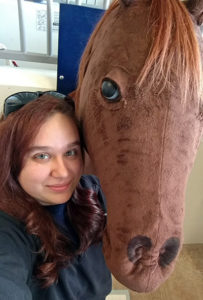
Shadow, Chance, and Sassy take their names from the 1993 Disney movie, Homeward Bound, and now reside mounted on the wall at horse height in the CSLC. The heads are extremely durable, portable, and feel like a true horse to the touch. The reception so far has been positive. Veterinary technician students from Parkland were the first to encounter the horse likenesses. Fall semester rotations have started and veterinary students are able to access the center and practice equine medicine with the CSLC’s new additions. “From what I can see, students are getting great practice out of them,” said Palafox.
Thanks to the innovation and talents of Katyana Palafox, the CSLC is now home to three lovingly life-like horse heads created in three weeks for under $1000. Where does Palafox see herself in the future? She doesn’t know, but it’s definitely with horses. “I’m head-on going for equine. As far as what actual path in equine, I don’t know. I’m deadset on horses, I’ve never changed from that. I’ve liked them ever since I was a kid,” said Palafox.
Watch Sassy come to life in a just six seconds through this animation Via GIPHY!
By: Stephanie Maurer

